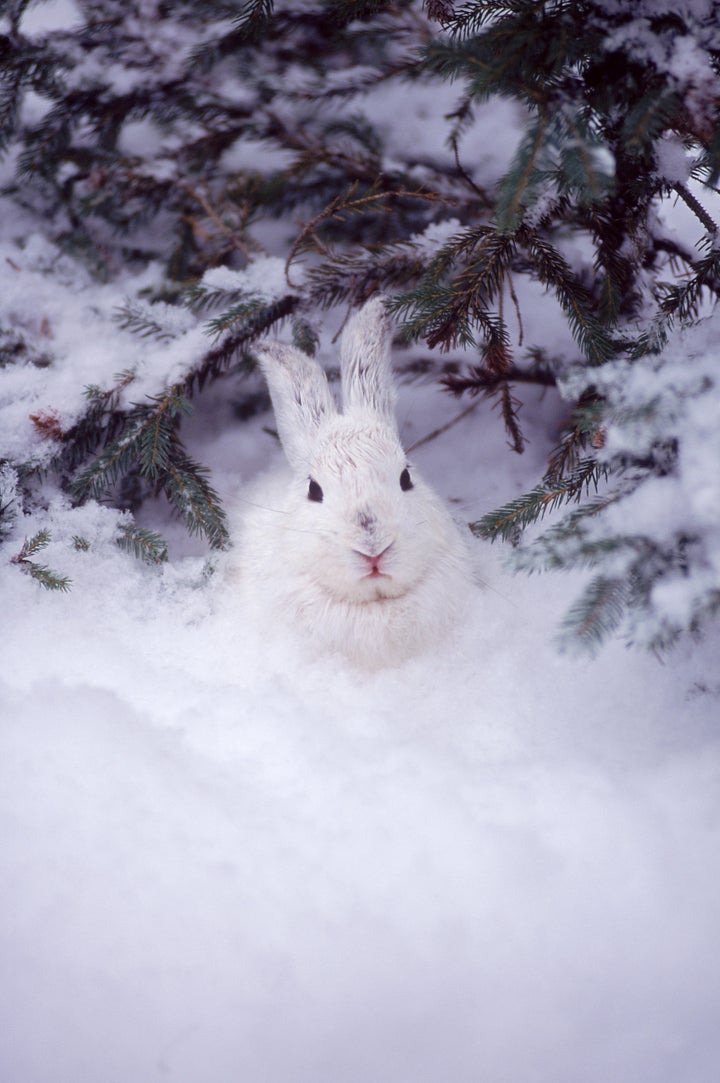
Climate change appears to be causing whole island nations to sink beneath the sea. Polar bears may be headed the way of the dodo.
There's even a theory that global warming thinks it'd be fun to mess up more than just the natural world -- and is also responsible for an increase in terrorist activity.
But a paper published in the journal Global Change Biology reveals climate change's cutest winners. Arctic ecologist Ken Tape and his co-authors make the case that snowshoe hares and moose in Alaska seem to be benefitting from the Earth's rising temperatures.
"Warming and expanded shrub habitat is the most plausible reason for recent snowshoe hare establishment in Arctic Alaska," they write. "The establishment of snowshoe hares and other shrub herbivores in the Arctic in response to increasing shrub habitat is a contrasting terrestrial counterpart to the decline in marine mammals reliant on decreasing sea ice."
The proposed mechanism is this: rising temperatures have led to earlier springs in northern Alaska. These have led to longer growing seasons, which means bigger shrubs.
Bigger shrubs, in turn, mean snowshoe hares have more places to hide and eat. That's resulted in the cute little critters appearing in parts of Alaska where they hadn't previously been seen.
Other herbivores, like moose, are thought to be similarly affected.
In the 1800s, "there were no snowshoe hares or moose in the Alaskan tundra," Tape told The Huffington Post.
Records show that moose came in the 1930s, followed by snowshoe hares in 1977, "both following their shrub habitat northward," he said. "We showed that the warming increased the height of shrubs, and those taller shrubs made it possible for snowshoe hares, and probably moose, to inhabit the region."
Snowshoe hares and moose aren't the only species finding the global warming glass half full, though some others might not provoke much enthusiasm. Yay, deer ticks, red imported fire ants and some "agricultural pests" also stand to gain from this rather apocalyptic nightmare.
And, sorry, Tape says not to read too much joy into his research, either.
On the one hand, snowshoe hares are undeniably cute, and moose are hunted and harvested, which puts food on the table for a lot of people in Alaska.
"So more moose would be positive in that sense," Tape said.
"Another view is that endemic tundra species could get squeezed out as shrubs overgrow their previously open tundra habitat, or as boreal species outcompete tundra specialists for forage."
Also on HuffPost:
Get in touch with HuffPost's animal welfare editor at arin.greenwood@huffingtonpost.com

